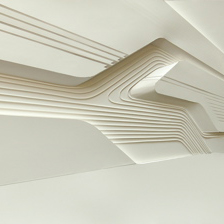
Works on paper by Zaha Hadid
Zaha Hadid is showing a new series of works on paper at Arndt & Partner gallery in Zurich, Switzerland.
The works - reliefs constructed of cut and folded white paper that represent Hadid's architectural projects - are part of the Conceptual Paper exhibition curated by Kenny Schachter.
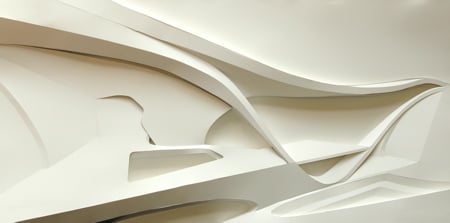
Above: Private Residence, San Diego, California, 2002-ongoing, Card relief in plexi box, 60,5 x 120,5 x 25 cm / 23.82 x 47.44 x 9.84 inch, HADI0002.
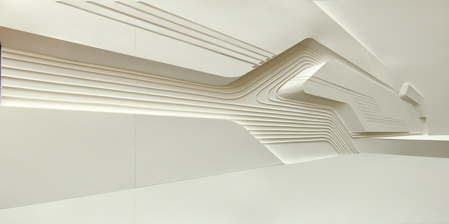
Above: Pierres Vives, Montpellier, France, 2002-ongoing, Card relief in plexi box, 60,5 x 120,5 x 25 cm / 23.82 x 47.44 x 9.84 inch, HADI0001
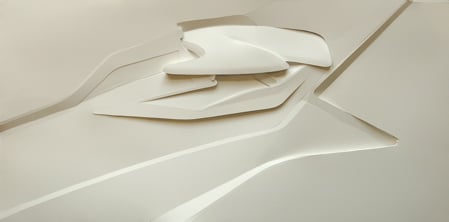
Above: Hungerburg Station Innsbrucker Nordkettenbahn, Innsbruck, Austria, 2004-ongoing, Card relief in plexi box, 60,5 x 120,5 x 25 cm / 23.82 x 47.44 x 9.84 inch, HADI0005
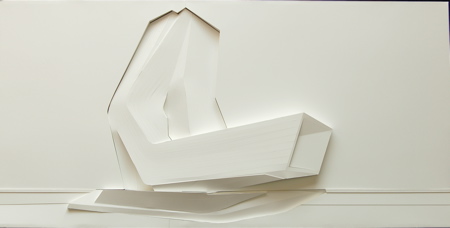
Above: Garden City Resort, Guggenheim Museum Competition, Singapore, 2005, Card relief in plexi box, 60,5 x 120,5 x 25 cm / 23.82 x 47.44 x 9.84 inch, HADI0003
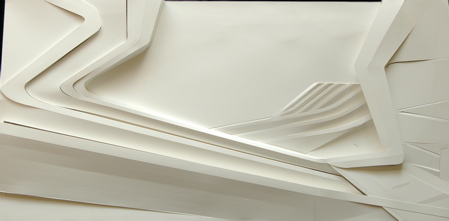
Above: Edifici Campus, Barcelona, Spain, 2006-ongoing, Card relief in plexi box, 60,5 x 120,5 x 25 cm / 23.82 x 47.44 x 9.84 inch, HADI0004
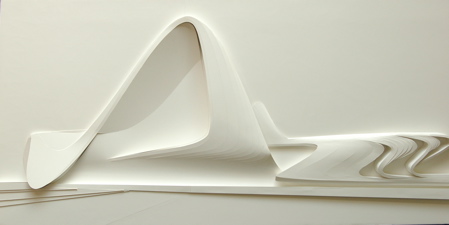
Above: Heydar Allyev Merkezi, Baku, Azerbaijan, 2006-ongoing, Card relief in plexi box, 60,5 x 120,5 x 25 cm / 23.82 x 47.44 x 9.84 inch, HADI0006
The show runs until 3 June.
Below is a short text from the gallery about the exhibition, and an introduction by curator Kenny Schachter:
--
CONCEPTUAL PAPER
Arndt & Partner Gallery, Lessingstrasse 5, CH-8002 Zurich, Switzerland
27 April - 03 June, 2007
Curated by Kenny Schachter, the show focuses on works on paper that represent poetic comments of ideal cosmologies as well as traces of immeasurable notions of what an image could be. Installative and lost works, works in progress and mental projects of artists - among whom the most talented and progressive of their generation – have found their expression in images of almost classical simplicity which at the same time challenge traditional methods of interpreting art to the fullest.
--
"Works on paper for me have always had an intimate quality, more like reading than other forms of art making. They provide a real glimpse into the mind of the artist at work. In presenting the work of 9 artists from the 1960s to the present, I take a much more expansive view of what constitutes a work on paper.
"The selection goes far beyond drawings or sketches to include photos by Vito Acconci, Dennis Oppenheim and Peter Hujar, paper constructions by the conceptual architect and artist Zaha Hadid, and encompassing landscapes by Paul Thek and Richard Artschwager, text drawings by Pope.L, abstractions by Yayoi Kusama, and instructions for sculptures by Chris Burden. All in all the works on display provide a snapshot into the means and methods of a group of the most talented artists of their respective generations.
"A pleasure to behold in and of themselves, these pieces are on a scale more human and accessible than much of today’s overblown artistic productions we are habitually bombarded with. It’s not about heroics or masterpieces, but about the pleasure to be derived from the connoisseur’s appreciation of something special.
--
"Hadid is a forerunner to the quotidian in today’s language of contemporary architecture. Before the advent of computers, her notions for building designs for today and the future began as abstractions on canvas and paper with obvious references to Russian constructivism, vorticism and futurism.
"This was no passing quote from past genres but a knowing absorption of historic art movements whose ambitions clearly pointed beyond the scope of the canvas. Hadid’s vision was so complex and light-years ahead of her time that people could not even relate or understand the levels of abstraction, which in her mind must have seemed as plain as daylight.
"Here she presents a new body of work made specifically for the show that uses paper in a relief-like fashion, resulting in a three dimensional drawing with no marks and a way of turning origami into a hyper progressive form of art and design."
- Kenny Schachter